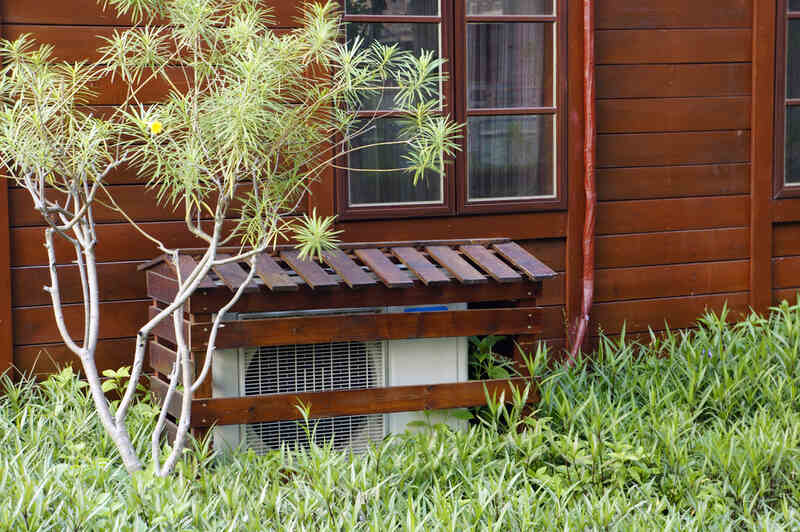Does “green HVAC” exist? Can it exist? These days, many homeowners and businesses are looking for ways to become more sustainable. They are drawn to eco-friendly products that are energy-efficient. This push for greener products has extended to the HVAC market, where rating scales such as EER, SEER, and AFUE indicate efficiency grades for different pieces of equipment. Elsewhere, homeowners are trying other strategies to make their HVAC systems more efficient, such as upgrading their windows to more energy-efficient double-glazed designs or redoing their insulation to reduce heat loss.
With so much attention being paid to energy efficiency in HVAC, though, it is important to realize that HVAC does use a lot of energy. In the United States, space cooling accounted for 380 billion kilowatt-hours (kWh) of electricity use in 2019. That figure equates to roughly 10 percent of the country’s total electricity usage. In total, more than 50 percent of a household’s annual energy consumption comes from space heating or air conditioning. These figures, combined with other concerns about HVAC—particularly the ozone-depleting nature of certain types of refrigerant, commonly used in air conditioning systems—beg the question whether “green” and “HVAC” are two words that should ever be used in the same sentence.
A Push Toward Greater Sustainability
The good news is that the HVAC industry is pushing toward sustainability. Newer HVAC units operate more efficiently than old ones, making the most of the energy they use to heat or cool buildings. The advent of smart thermostats and other smart home technology (such as smart blinds) have made it easier to maximize the efficiency of an HVAC system. More homes are being designed and built with energy efficiency in mind—with a huge emphasis put on proper insulation and energy-efficient windows.
Elsewhere, new innovations offer potential glimpses at a very different future of green HVAC. Some scientists have discussed the possibility of modifying air conditioners so they such carbon dioxide out of the atmosphere and turn it into usable fuel. A trailblazing company in Australia is looking into the concept of thermally-driven air conditioning—or systems that capture heat energy from the sun and then use it to power chillers for space cooling purposes. For a decade or longer, a business in California was creating quite a buzz for its ice-powered air conditioners, though that company ultimately filed for bankruptcy at the end of last year.
Not all these innovations will become household necessities. Perhaps none of them will. However, they show that making progress and driving change in the areas of space heating and cooling is possible. Those changes won’t happen overnight, but they are happening. Better yet, they are driving the market in a more sustainable, environmentally friendly direction.
Other shifts are happening, too. The United States Environmental Protection Agency (EPA) has mandated the phase-out of R-22, a common refrigerant, by 2020. As of this year, businesses are not allowed to produce or import hydrochlorofluorocarbons, or HCFCs. The phase-out doesn’t render R-22 illegal in general: if your air conditioner uses this substance, you don’t have to replace the unit immediately because of the new laws. However, you will find that servicing your air conditioner will be more difficult in the future, simply due to the lack of available refrigerant. R-22 and other HCFC’s have been found to be ozone-depleting substances, which contribute to climate change.
Doing Your Part for Green HVAC
If you are adamant about achieving peak energy efficiency and sustainability with your HVAC system, there are a few steps you can take to help things along. These include:
- Regular servicing of your system. Deferred maintenance can mean missing problems with your HVAC system that ultimately affect performance and efficiency. Routine maintenance for both your heating unit and your cooling unit will help reduce the risk of overlooking these issues.
- Thermostat programming. Get strategic about how you are using your thermostat. Especially if your building is zoned, you can program temperature adjustments throughout the day depending on when certain rooms or parts of the house/business are in use. Merely reducing the workload for your HVAC system can reduce its energy usage and extend its lifespan.
- Duct cleaning. Over time, your ducts will build up all manner of debris: pet hair, dust, dirt, and much more. These particles can clog up vents and make it more difficult for heated or cooled air to make it from your HVAC units to the rooms throughout the building. Having your ducts cleaned regularly will provide a clearer highway for that air to travel, which will mean less strain on your HVAC system. It will also help with air quality.
Green HVAC is possible, and working with the right HVAC technician makes achieving it that much easier. Ask your HVAC tech about ways to make your system more sustainable.

